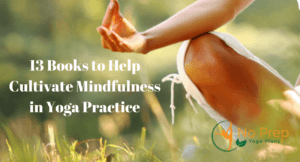Creating a yoga class with a theme is the most usually used method by yoga teachers to inspire their groups with purpose. The hurdle for us all is how to do it well.
For a yoga studio theme to be useful, it must go deep into the heart of each student in the class. If you are training special clients, you will be able to customize each exercise around individual goals or intentions. As these may vary among individuals in all levels, you will want to find yoga session themes that are both available to the group but can be deeply sensed by each learner.
#1: “Embracing transformations”
As human beings, we are pretty complicated organisms, built to improve, grow and adjust to any conditions. Most of the time, despite, we hold change, even when it is something we have begun such as moving house or seizing a job progression. According to yoga theory, we are always and continuously changing in every moment of every day, within the law of karma. Our replies to these changes may not transform us in a toad in the next life, but they will leave a mark on our awareness.
Begin the class by asking students to reflect on changes in their own life. From there you might offer some mindfulness practice, suggesting students check in with their body and spirit, noticing any tensions, thoughts, physical sensations before moving on to a sequence of heart opening poses.
#2: “Expressing Grace”
Thanksgiving is the hallmark of a healthy mind and spirit. Being grateful for what is right in our worlds; instead of concentrating on what is wrong is the solution to gracious living.
For this class, you might plan a series around standing postures and balances, utilizing verbal cues and visualizations to support aims. In the tree posture spend some time on the wonder of legs, their love, and beauty.
#3: “Playing the Edge”
Playing the edge is all about owning a healthy ambition in life, to accomplish your personal best. In yoga, this same theory applies to our method of asanas. Without forcing too hard, for example, you might promote your students to explore the point beyond where they consider the first stretch, taking each stance a little deeper. “Playing the Edge” supports us to move beyond the rest zone, adventuring beyond our sensed boundaries.
#4: “Training non-attachment”
Non-attachment (vairagya) is one of the core teachings of yoga, described in the Yoga Sutras by Patanjali. Patanjali’s opinion of yoga is the point at which we can stop recognizing with our thoughtfulness and be able to see the real reality. To attain that state of enlightenment we need a calm self, one that does not classify with any pre-conceived senses of the person.
To prepare a series on this theme, develop in many scaffolding acts.
#5: “Be yourself Yoga”
Being yourself is the-hardest-yoga-pose of them all. Think about it. To be ourselves is to be enlightened. According to fantastic Indian book, The Bhagavad Ghita, a happy or enlightened person follows their Dharma (true calling), “one cannot keep himself on the spiritual path if he abandons the duties born of his true nature.
To promote self-realization and empowerment in this themed class, plan your sequence around the warrior poses. .
If all else loses, as a yoga instructor lead with your heart. Speak to your students about what encourages you to exercise yoga and why.
Little time for prepare for your yoga classes or want to create a class that your students will love, check out No Prep Yoga Plans.




